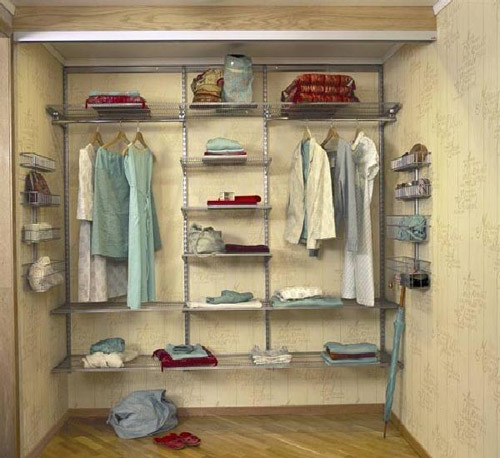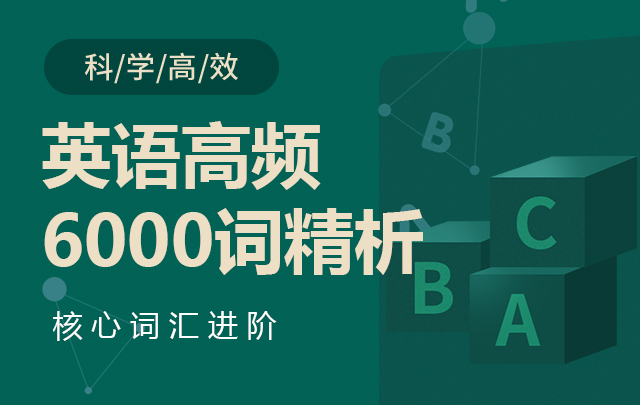
Like many fashion-loving young women on a budget, I went crazy over Beijing's clothing markets. "You can bargain a pair of cargo pants down to $5? Get a skirt for $3 and a scarf for just $1.50?" I had never before seen such an enormous amount of inexpensive clothing.
Friends and I became regulars at the Silk Market, the original Wudaokou Clothing Market and the Zoo Whole-sale Clothing Market. After my first year in China, I had picked up enough new clothes and fashion accessories to fill two huge suitcases.
Now, eight years later, only three pieces of clothing from the time are still around - a winter coat, a sweater and a summer skirt. The rest have either faded, torn, shrunk, stretched, fallen out of fashion or just became too uncomfortable to wear.
In hindsight, I realized that I had bought impulsively, even taking clothes that didn't zip properly because I liked their designs. I was swayed by low prices and cared more about buying quantity than quality.
In 2012, according to data from the China National Garment Association, the country produced 43.6 billion pieces of clothing. The world's biggest garment exporter, with a third of the slice of the pie, China also sees mountains of low-cost clothing enter the domestic market.
The flow of new, affordable designs can be irresistible to fashionistas, but a big wardrobe isn't always better. I'm reminded of the primacy of quality whenever I think about the oldest piece in my closet. It's a white eyelet blouse from a designer's ready-to-wear line, which my mother picked out at a Manila department store during my college freshman year. I balked at the price tag of about $35, but 18 years and three countries later, I still wear it.
When I began reporting on sustainable lifestyles a couple of years ago, I started to ask myself a few questions before buying new clothes. "Can you see yourself in this outfit five to 10 years from now? Is it something that will last? Will it go well with the things you already own?"
These are the same ideas behind having a "capsule wardrobe" - a collection of a few essential pieces that can be mixed and matched, worn from day to night and updated with key items. The concept became popular in the West in the mid-1980s, following the release of American designer Donna Karan's "7 Easy Pieces", which consisted of a bodysuit, skirt, blouse, coat, leggings, jacket and dress.
The capsule wardrobe's emphasis is on having a small yet versatile clothing collection, which will survive fashion trends and washing cycles.
Chinese consumers, who only rediscovered modern fashion following the country's economic reforms three decades ago, want to buy more - not less. People such as Wang Mingming, who have adopted capsule wardrobes in the face of so much bargain clothing, are a rarity. In 2009, the resident of Ningbo, Zhejiang province, simplified her wardrobe to seven sets of clothing per season. She makes sure not to wear an outfit twice in the same week and uses shoes and bags to freshen her look, but the 32-year-old has basically been wearing a handful of items again and again for years. The oldest piece she owns dates back to 2001.
Wang's decision has not only helped her put together a quality wardrobe, but it has also improved her quality of life. She wanted to devote more energy to exercising, reading and relaxing, and not having to keep up with fashion trends has freed up her time and money.
Inspired by such stories, I've toyed with the idea of also living on a capsule wardrobe. If I were to have only "7 Easy Pieces", then I'd have to get rid of 150 garments. Since I've now gone for seven months without buying any new clothes, I'm confident this goal will be within reach in this lifetime.
像许多爱好时尚的年轻女性节省费用那样,我非常喜欢北京的服装市场。“你可以将一条工装裤讨价还价低至5美元吗?花3美元买一条裙子,1.50美元买一条围巾吗?”我从未见过如此大量的便宜服装。
我和朋友们成为秀水街、原来的五道口服装市场和动物园服装批发市场的常客。在中国住了一年以后,我添置的新衣服和时尚饰品可以装满两个大号行李箱。
八年后的现在,当时的衣服只剩三件常穿——一件冬天的外套,一件毛衣和一条夏天的裙子。其余的或褪色,或扯破,或缩水,或撑大,或过时,或只是穿的不太舒服。
事后看来,我意识到当时的冲动购物,甚至买的一些衣服裁剪并不合适,但仅仅因为喜欢它们的设计而把它们买下来。我是很易受低价左右的人,更关注的是购买的数量而不是质量。
中国服装协会的数据显示,2012年中国生产了436亿件衣服。作为世界上最大的服装出口国,其出口量占世界总出口量的三分之一,与此同时中国也有大量的低成本服装进入国内市场。
新颖且价格实惠的服装设计对于时尚达人来说是不可抗拒的,但一个大的衣橱并不总是好事。每当我想起橱柜里那件最旧的衣服,我都会提醒自己质量是第一。这是从一位设计师的成品系列中购买的一件白色网眼女式衬衫,那时我上大学一年级,是我母亲在一家马尼拉百货商店挑选的。标价约35美元,我当时犹豫不决,但历经18年、游历三个国家之后,我仍然穿着它。
当几年前我开始报道可持续生活方式时,我开始在购买新衣服之前问自己几个问题。“你在未来5到10年都能穿这件衣服吗?它耐穿吗?它和你已有的衣服能搭配得起来吗?”
这些都是掩藏在“胶囊衣橱”之后的想法——这里面是少量必备衣服、可以混合搭配,一天到晚都可以穿,款式也不会太过时。二十世纪八十年代中期,随着美国设计师唐纳•卡兰(Donna Karan)发布她的“简洁7件”理念,上述观念在西方变得流行,这一理念倡导的“7件”为:一件紧身衣、一条裙子、一件女装衬衫、一件外套、一件夹克衫、一条裤子及一件晚礼服。
“胶囊衣橱”的重点是收藏的衣服少但具有多功能性,能够在时尚潮流的变迁和多次洗涤后留存下来。
30年前,随着中国的经济改革,中国消费者才重新发现现代时尚,他们想购买的更多而不是更少。不过也有王明明(音)这样的人实践了“胶囊衣橱”理念,然而这种人是很罕见的。2009年,浙江宁波的王明明简化了她的衣橱至每季七套服装。她确保不在一个星期内将同一套衣服穿两次,并利用鞋子和手袋搭配出新鲜感。但32岁的她,几年来基本上就是把这几件衣服一穿再穿。她穿的衣服中,最旧的一件是2001年买的。
王明明采用“胶囊衣橱”的决定不仅帮助她组建了一个有质量的衣橱,而且也提高了她的生活质量。她想把更多的精力用来锻炼、阅读和放松,没有跟上时尚潮流使她得以空出时间、节省金钱。
受到这样故事的鼓舞,我曾半开玩笑地设想以“胶囊衣橱”为生。如果我只有这“简单7件”,那我就必须得处理掉150套衣服。我已经七个月没有买任何新衣服了,我相信这一目标将在我一生中实现。
 免费试听
免费试听

时长 : 5:22 主讲 : 金格妃

时长 : 27:51 主讲 : 金格妃

时长 : 17:20 主讲 : 郭宁

时长 : 3:54 主讲 : 金格妃

时长 : 26:58 主讲 : 乔迪

时长 : 26:58 主讲 : 乔迪

时长 : 26:58 主讲 : 乔迪

时长 : 3:54 主讲 : 金格妃

时长 : 1:46 主讲 : 金格妃
 推荐阅读
推荐阅读
日常生活英语口语,对于大家来说,也是比较常见的,用到的频率更高。所以加强这部分英语口语的练习,可以更便利大家的生活。那么这些常
来源 : 网络 2024-04-06 18:51:31 关键字 : 日常生活英语
日常生活英语口语,对于大家来说,也是比较常见的,用到的频率更高。所以加强这部分英语口语的练习,可以更便利大家的生活。那么这些常
来源 : 网络 2024-05-16 08:16:00 关键字 : 日常生活英语
日常生活英语口语,对于大家来说,也是比较常见的,用到的频率更高。所以加强这部分英语口语的练习,可以更便利大家的生活。那么这些常
来源 : 网络 2024-05-16 08:16:00 关键字 : 日常生活英语
日常生活英语口语,对于大家来说,也是比较常见的,用到的频率更高。所以加强这部分英语口语的练习,可以更便利大家的生活。那么这些常
来源 : 网络 2024-05-16 08:16:00 关键字 : 日常生活英语
日常生活英语口语,对于大家来说,也是比较常见的,用到的频率更高。所以加强这部分英语口语的练习,可以更便利大家的生活。那么这些常
来源 : 网络 2024-05-16 08:16:00 关键字 : 日常生活英语
日常生活英语口语,对于大家来说,也是比较常见的,用到的频率更高。所以加强这部分英语口语的练习,可以更便利大家的生活。那么这些常
来源 : 网络 2024-05-16 08:16:00 关键字 : 日常生活英语
日常生活英语口语,对于大家来说,也是比较常见的,用到的频率更高。所以加强这部分英语口语的练习,可以更便利大家的生活。那么这些常
来源 : 网络 2024-05-15 08:14:00 关键字 : 日常生活英语
日常生活英语口语,对于大家来说,也是比较常见的,用到的频率更高。所以加强这部分英语口语的练习,可以更便利大家的生活。那么这些常
来源 : 网络 2024-05-15 08:14:00 关键字 : 日常生活英语
日常生活英语口语,对于大家来说,也是比较常见的,用到的频率更高。所以加强这部分英语口语的练习,可以更便利大家的生活。那么这些常
来源 : 网络 2024-05-15 08:14:00 关键字 : 日常生活英语
日常生活英语口语,对于大家来说,也是比较常见的,用到的频率更高。所以加强这部分英语口语的练习,可以更便利大家的生活。那么这些常
来源 : 网络 2024-05-15 08:14:00 关键字 : 日常生活英语
